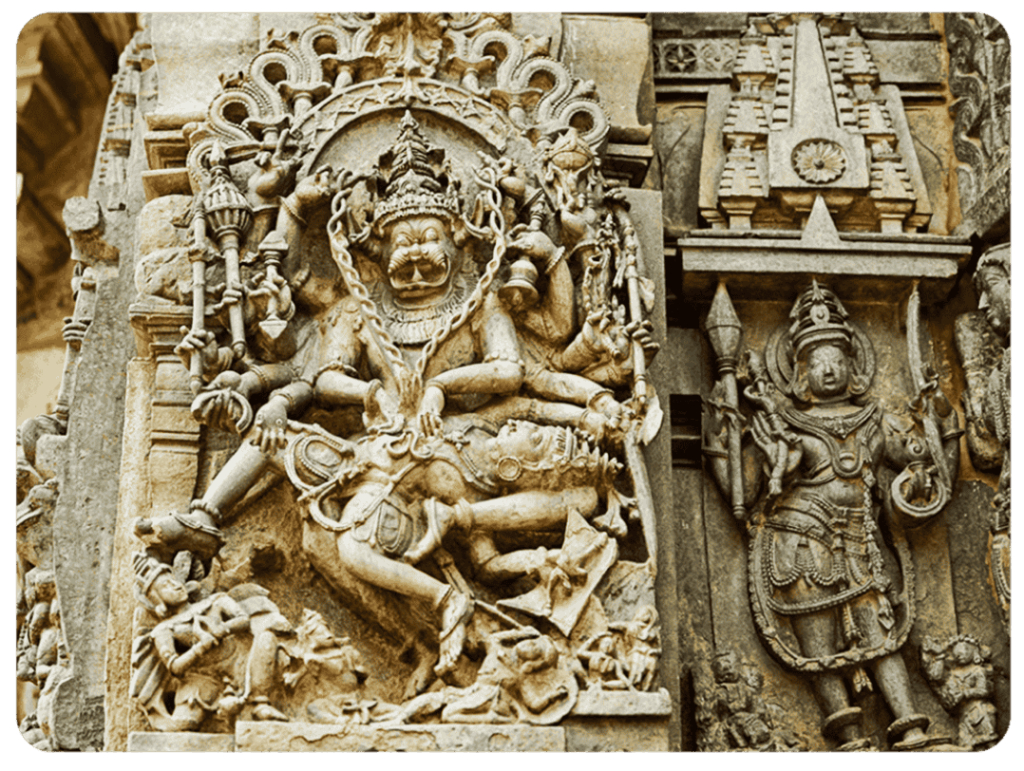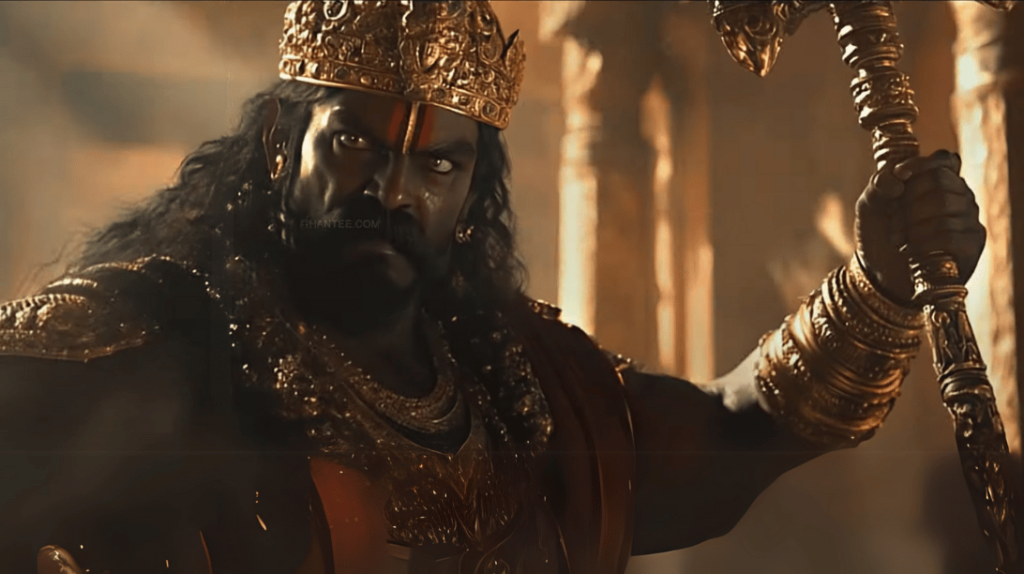
Many ancient temples in India bear inscriptions that vividly narrate the story of Narasimha, reflecting the enduring spiritual and cultural significance of this divine avatar.

The Rise of Hiranyakashipu
During the Satya Yuga, the asura king Hiranyakashipu sought ultimate power in order to defeat the devtas and rule the three world (heaven, earth, underworld). Hiranyakashipu performed severe penance to please Lord Brahma.
Hiranyakashipu, seizing this opportunity, asked to be made immortal. However, Lord Brahma refused, saying that immortality was a boon even he could not grant.
Determined, Hiranyakashipu instead asked for near invincibility — that he would not be killed by a man or a beast, neither during the day nor at night, neither indoors nor outdoors, and that no weapon could harm him.

Granted this formidable boon, Hiranyakashipu unleashed a reign of terror. He declared himself the supreme god, forcing everyone to worship only him. His cruelty and tyranny spared no one who dared to defy his will, ruthlessly suppressing all reverence for other deities.
The Devotion of Prahlada
Ironically, in his own household, Hiranyakashipu’s young son, Prahlada, became a devout follower of Lord Vishnu. Despite his father’s fury and repeated attempts to change his mind through threats, punishments, and cruel tortures, Prahlada’s faith remained unshaken. His unwavering devotion enraged Hiranyakashipu further, leading him to the brink of madness.
The Challenge to the Divine
One fateful day, Hiranyakashipu confronted Prahlada and demanded to know where Vishnu was, if he truly existed. Calm and fearless, Prahlada replied, “He is everywhere, even in this pillar.” Enraged beyond measure, Hiranyakashipu struck the pillar with his mace, challenging Vishnu to appear.

Divine Roar!
At that moment, the pillar cracked open with a deafening roar. From it emerged Narasimha, the fierce half-man, half-lion form of Vishnu — neither man nor beast. The heavens trembled at the sight of this terrifying avatar, with a lion’s head, a human body, and cosmic fury in his eyes.

The End of Tyranny
Narasimha dragged Hiranyakashipu to the threshold of a courtyard — neither indoors nor outdoors — at twilight — neither day nor night. Placing the tyrant on his lap — neither land, air, nor water — Narasimha used his sharp claws — not weapons — to tear him apart, thus fulfilling every condition of Brahma’s boon. The reign of terror ended with a roar that echoed through the universe.
Restoration of Balance
Even after Hiranyakashipu’s death, Narasimha’s rage remained unstoppable. The gods prayed for calm, but it was only the gentle voice of little Prahlada, his devotee, that soothed Narasimha’s fury. Pleased by Prahlada’s devotion and courage, Vishnu blessed him to be a wise and just king, ensuring peace once again prevailed.